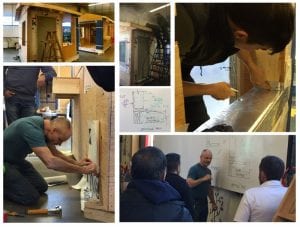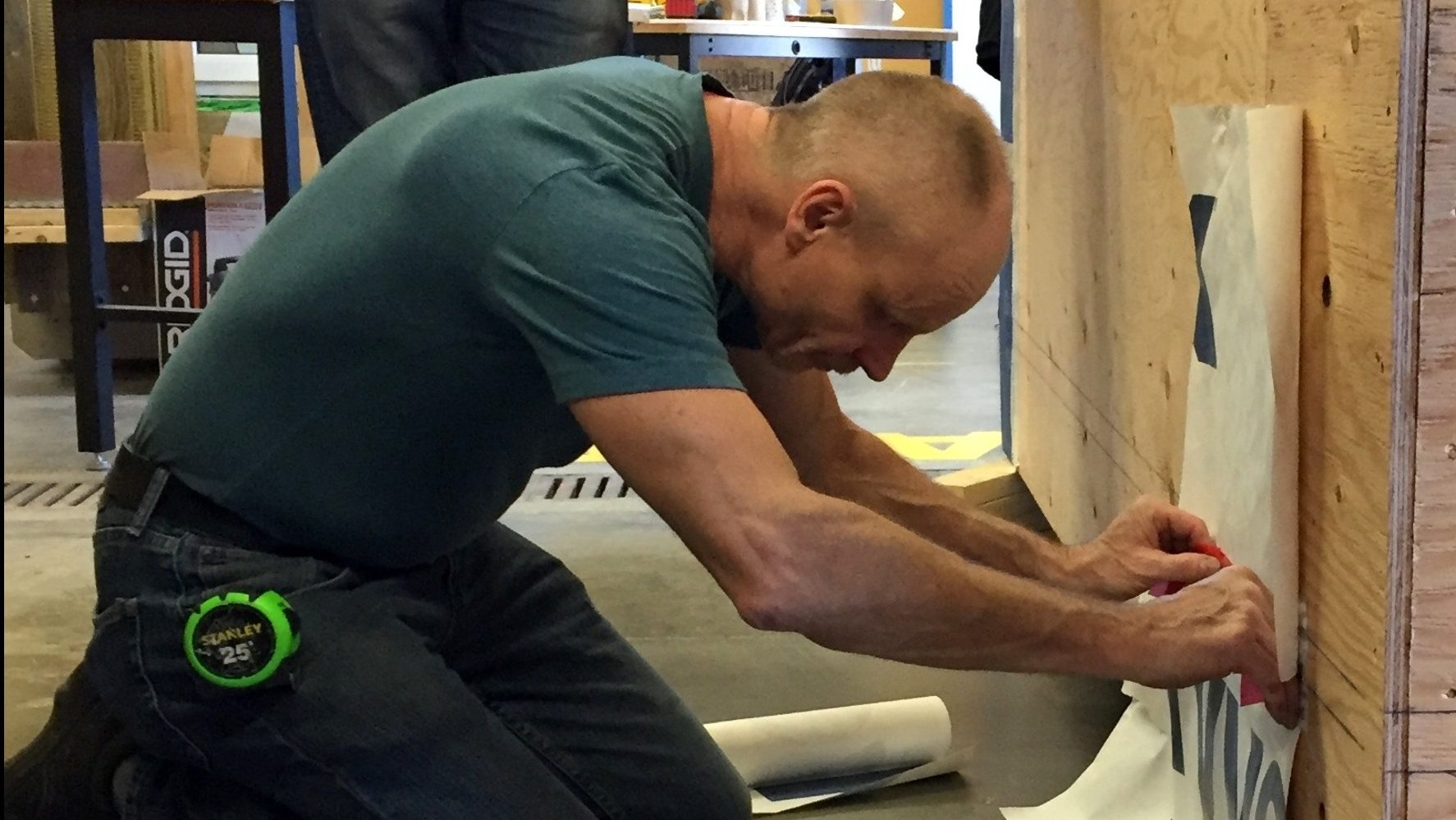A partnership between BCIT, City of Vancouver, RDH Building Sciences and Small Planet Supply.
The School of Construction and the Environment of British Columbia Institute of Technology (BCIT) had the pleasure of hosting the City of Vancouver Airtightness Training Workshop. The one-day, hands-on training program was held in March at the Burnaby campus High Performance Building Lab. Experts at RDH Building Sciences and Small Planet Supply joined together to develop this workshop to help builders acquire the knowledge and skills needed to build energy efficient homes.
Background
The City of Vancouver is working toward zero operational greenhouse gas (GHG) emissions from all new buildings by 2030. As part of this long-term plan, the City of Vancouver building bylaws now require airtightness testing. Airtightness is the resistance to airflow through unintentional openings or cracks in the building envelope. Sealing these openings vastly reduces energy consumption and greenhouse gas emissions from a building’s operation.

The blower door test measures a building’s airtightness. The test pressurizes the building and measures the total amount of escaped air. If the measured value is 3.5 ACH50 or less, then the builder proceeds with the City of Vancouver building inspection.
Vancouver Airtightness Training
BCIT has developed courses, a High Performance Building Lab, and a variety of mobile education products to meet the demands of and support the construction industry transition to the new BC Energy Step Code and the new additions to City of Vancouver Zero Emissions Building bylaws.
Alex Hebert, Manager of Zero Energy Buildings at BCIT, was more than happy to host the workshop at BCIT.
“Having this amazing City of Vancouver, RDH, and Small Planet Supply workshop delivered in our lab was a natural fit and we are thrilled to now be part of its success.”
The workshop, provided by a collaboration between City of Vancouver, RDH and Small Planet Supply, covers airtightness from top to bottom in a day. It starts with a discussion on air barriers and how to define them in a project. The workshop also includes hands-on activities such as learning about how to make air barriers and where to apply them.
For more information and to apply for the workshop, access the course website.
